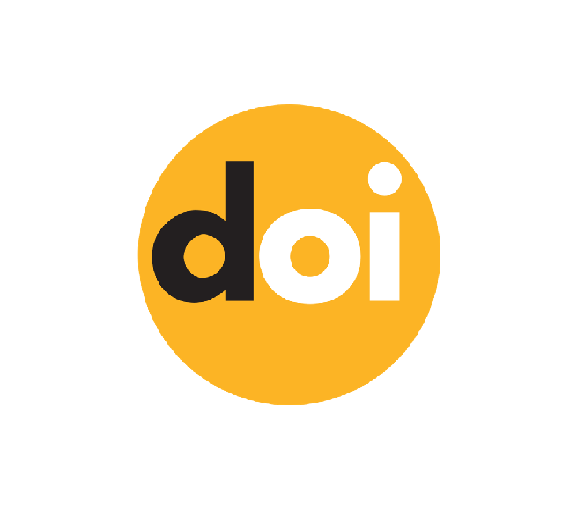MOBILE ASSISTED LANGUAGE LEARNING (MALL): WILL IT EVER BE AN ENGLISH LEARNING REALITY IN SRI LANKA?
Abstract
Mobile Assisted Language Learning (MALL) is becoming a popular term along the line of CALL (Computer Assisted Language Learning) in the Western arena. Yet in Sri Lanka CALL and MALL have not sustained a place among the ESL (English as a Second Language) Learners. Unavailability of CALL software in Sri Lanka and high cost of software available internationally, along with the difficulties in maintaining computer laboratories make CALL unpopular. On the other hand, mobile phones, especially smart phones, have become popular and commonly available among the Sri Lankan University students. In the present context, though mobile phones are used for learning English their use for language learning is not studied among university students in Sri Lanka.
The objective of this study is to find how the fourth year students at the Faculty of Arts of a Sri Lankan university use their mobile phones in English classes for learning English. In addition, this study explores the possible uses of mobile phones for learning English. Observation, followed by a written report and in-depth interviews with students are the main sources of data collection. In this study, it was revealed that students use mobile devices mainly for acquiring vocabulary skills. Sometimes they access internet service for translating sentences and also for browsing model essays, letters, etc. In addition, they use mobiles for sharing information via WhatsApp and Viber. Nevertheless, these uses seem to be not productive enough for language development like the way students use CALL for learning a language.
References
Alemi, M. & Lari, Z. (2012). SMS Vocabulary learning: A tool to promote reading comprehension in L2. International Journal of Linguistics, 4(4) 275- 287.
Ally, M. (Ed.). (2009). Mobile Learning Transforming the Delivery of Education and Training. Edmonton: AU Press.
Bahrani, T. (2011). Mobile Phones: Just a Phone or a Language Learning Device? Cross-Cultural Communication. 7(2) 244-248.
Basoglu, E. B. & Akdemir, O. (2010). A Comparison of Undergraduate Students’ English Vocabulary Learning: Using Mobile Phones And Flash Cards. TOJET: The Turkish Online Journal of Educational Technology. 9(3) 1-7.
El Hariry, N. A. (2015). Mobile Phones as Useful Language Learning Tools. European Scientific Journal June 2015 edition. 11(16) 298-317.
Fazeena, J. F., Ekanayake, Y. & Hewagamage, K. P. (2015). A Theoretical Approach to initiate Mobile Assisted Language Learning among school leavers and University Students of Sri Lanka. Paper presented at the Australasian Conference on Information Systems.
Fazeena, J. F., Hewagamage, K. P. & Ekanayake, Y. (2012). Suitability of Mobile Learning to enhance English language learning: A survey among University of Colombo School of Computing Students. Conference paper.
Fujimoto, C. (2012). Perceptions of mobile language learning in Australia: How ready are learners to study on the move? JALTCALL Journal. 8(3) 165-195
Herrington, A, Herrington, J & Mantei, J, Design principles for mobile learning, in Herrington, J, Herrington, A, Mantei, J, Olney, I & Ferry, B (Eds), New technologies, new pedagogies: Mobile learning in higher education, Faculty of Education, University of Wollongong, 2009, 138p.
Hockly, N. (2013). Designer learning: The teacher as designer of mobile-based classroom learning experiences. Monterey, CA: The International Research Foundation for English Language Education. Retrieved from http://www.tirfonline.org/english-in-the-workforce/mobile-assisted-languagelearning/
Karimkhanlooei, G., and Fooladi, F. (2015). Comparison of the Effect of Vocabulary Learning Using SMS versus Traditional Method (Flashcards) on Reading Comprehension of Dentistry Students. International Journal of Review in Life Sciences. 5(9) 466-475.
Kukulska-Hulme, A., Norris, L., & Donohue, J. (2015). Mobile pedagogy for English language teaching: a guide for teachers. London: British Council.
Mehta, N. K. (2012). Mobile phone technology in English teaching: causes & concerns. MJAL, 4(2) 82-91. Retrieved from www.mjal.org.
Navaz, A. M. M. & Sameem, M. A. M. (2013). Computer Assisted Language Learning: Perception and Practice of Undergraduate Students of South Eastern University of Sri Lanka. Paper published at the conference handbook of the Third International Symposium of the South Eastern University of Sri Lanka, July 2013.
Pramis, J. (2013). Mobile phones to exceed world population in 2014. Digital Trends. Retrieved from http://www.digitaltrends.com/mobile/mobile-phone- world-population2014/ #ixzz2cpK-2a2af.
Thornton, P. & Houser, C. (2005). Using mobile phones in English education in Japan. Journal of Computer Assisted Learning, 21, 217–228
Watanabe, Y. (2012). Ready for m-learning? Access to mobile devices by tertiary students studying Japanese. In M. Brown, M. Hartnett & T. Stewarts (Eds) Future Challenges, sustainable futures. Proceedings ASCILITE, Wellington 2012. pp 1030-1038.
Published
How to Cite
Issue
Section
License
Copyrights for articles published in Journal of Asian and African Social Science and Humanities are retained by the authors, with first publication rights granted to the journal. The journal/publisher is not responsible for subsequent uses of the work. It is the author's responsibility to bring an infringement action if so desired by the author.
Articles published in Journal of Asian and African Social Science and Humanities are published under the Creative Commons Attribution (CC-BY) license, which permits others to distribute, remix, tweak, and build upon your work as long as they credit you for the original creation.
Â














